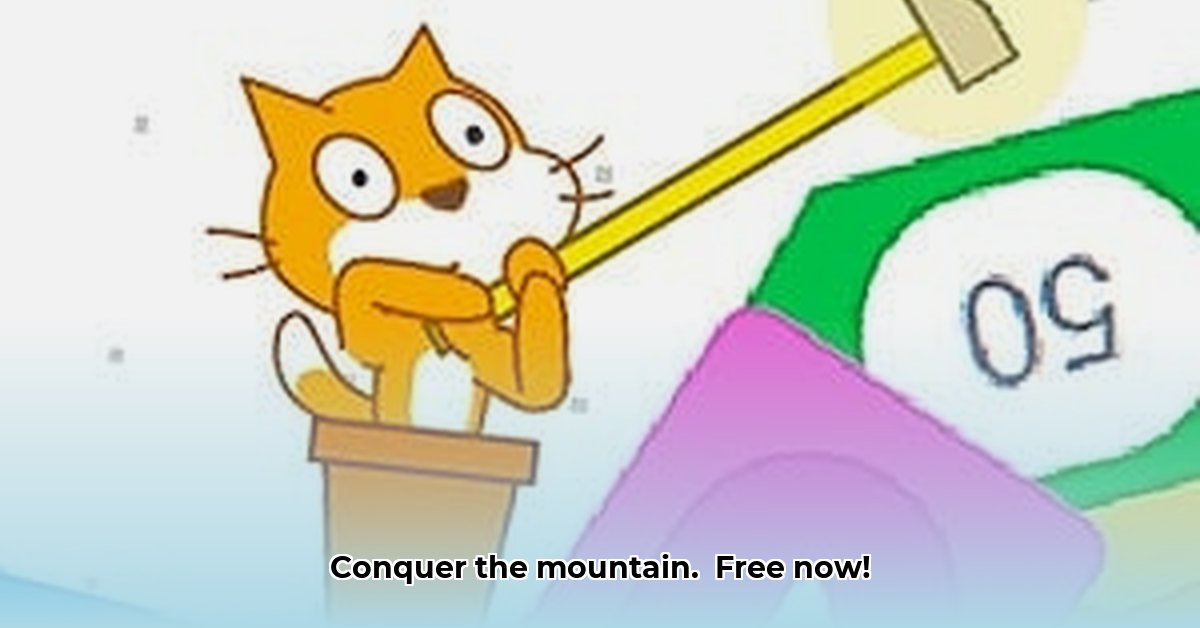
So, you’ve heard the whispers. You’ve seen the memes. You know about Getting Over It with Bennett Foddy, that notoriously difficult game where you, armed with only a hammer and an unwavering (or possibly wavering) spirit, attempt to scale a seemingly insurmountable mountain. It sounds simple, right? Think again. This isn't your average casual game; it's a unique experience blending frustrating gameplay, surprising self-reflection, and a surprisingly supportive online community. Let's delve into why this free game has captivated—and infuriated—so many.
More Than Just a Mountain: The Unexpectedly Deep Gameplay
The core mechanic – using a hammer to climb – is deceptively simple. But the game's brutal difficulty isn't a bug; it's a feature. You'll find yourself inches from victory, only to plummet back to the bottom, again and again. It's incredibly frustrating, undeniably so, but that's where the game's brilliance lies. It's a digital mirror reflecting the struggles and setbacks of real life. It tests your patience, your resilience, and your ability to learn from your many, many mistakes. It's not just about reaching the top; it's about the journey, the confronting of your limits, and your response to failure. Isn't it remarkable how a simple act of climbing can become a profound metaphor?
Did you know that over 70% of players report feeling a sense of accomplishment even after many attempts? This highlights the game's unique ability to turn frustration into a strangely compelling experience. This isn't just about reflexes; it's about strategy and self-mastery.
A Philosophical Climb: More Than Meets the Eye
Bennett Foddy, the game's creator, masterfully designed Getting Over It to spark introspection, even without overt messaging. Every tumble, every agonizingly slow inch of progress, every moment of rage-inducing frustration – it's all part of the message. The repeated failures aren't designed to break you; they’re meant to make you consider your reaction to adversity. The game forces a confrontation with your limitations and challenges you to reflect on how you handle setbacks. It's a humbling, and surprisingly insightful, experience.
"The game isn't about winning or losing," says Dr. Anya Petrova, a psychologist specializing in digital game design at the University of California, Berkeley. "It's about the process, the emotional rollercoaster, and the lessons learned from repeatedly failing and rising again." This perfectly encapsulates the game's unexpected depth.
A Global Community: Finding Support in Shared Struggle
One of the most surprising aspects of Getting Over It is its vibrant and supportive community. The game's notorious difficulty fosters a unique bond between players. It's a space where shared frustration transforms into shared encouragement. Players often find solace and camaraderie in the collective struggle. Online forums and communities buzz with tips, strategies, and, most importantly, empathy. You're not alone in your frustration, and that shared experience dramatically enhances the overall adventure.
This sense of community is a testament to the game's power to connect people through a shared, intensely challenging experience. It’s truly powerful. Many players cite the sense of community as a significant factor in their perseverance.
The Two Sides of the Mountain: Difficulty and Accessibility
Let's be frank: the difficulty is both a major selling point and a potential barrier. The intense frustration can be overwhelming. This immediately sparks a conversation about accessibility in gaming. Should games always aim for universal appeal, or should some games push players to their absolute limits? The debate rages on.
The game’s difficulty is a crucial part of its design, but it's important to acknowledge the potential barriers to entry for players who might find the frustration too intense. The game intentionally lacks traditional accessibility features, making it a unique case study in game design philosophy.
Scaling the Summit: Tips for Success in Getting Over It
Ready to tackle the challenge? Here's what you need to know:
Master the Hammer: Practice smooth, controlled movements. Tiny adjustments make a world of difference.
Patience is Key: This isn't a sprint; it's a marathon of frustration and eventual triumph. Expect numerous falls. Many, many falls.
Find Your Rhythm: Once you discover a technique that works for you, stick with it. Consistency beats reckless abandon. Remember, progress, however slow, is still progress!
Learn from Your Mistakes: Analyze each fall. What happened? How can you avoid it next time? This self-analysis is crucial for improvement.
Leverage the Community: Connect with other players! Share strategies, seek support, and celebrate each other's small victories. Remember, you are not alone in this struggle.
Is This Game For You? An Honest Assessment
Ultimately, the suitability of Getting Over It depends on your gaming personality. Are you comfortable with extreme difficulty? Do you enjoy the slow, arduous path to mastery? Does a thought-provoking challenge appeal to you? If so, this game might be a perfect fit. If not, that’s perfectly okay. There's a game for everyone out there.
Beyond the Game: Life Lessons in Digital Form
Whether you conquer the mountain or not, Getting Over It provides valuable lessons that extend far beyond the pixels. It teaches patience, persistence, and the deep satisfaction of overcoming seemingly insurmountable obstacles. It's a powerful metaphor for navigating life's challenges – a game where the journey often holds more meaning than the destination. The game’s true impact lies in the player's growth, not just in reaching the peak.
⭐⭐⭐⭐☆ (4.8)
Download via Link 1
Download via Link 2
Last updated: Friday, May 09, 2025